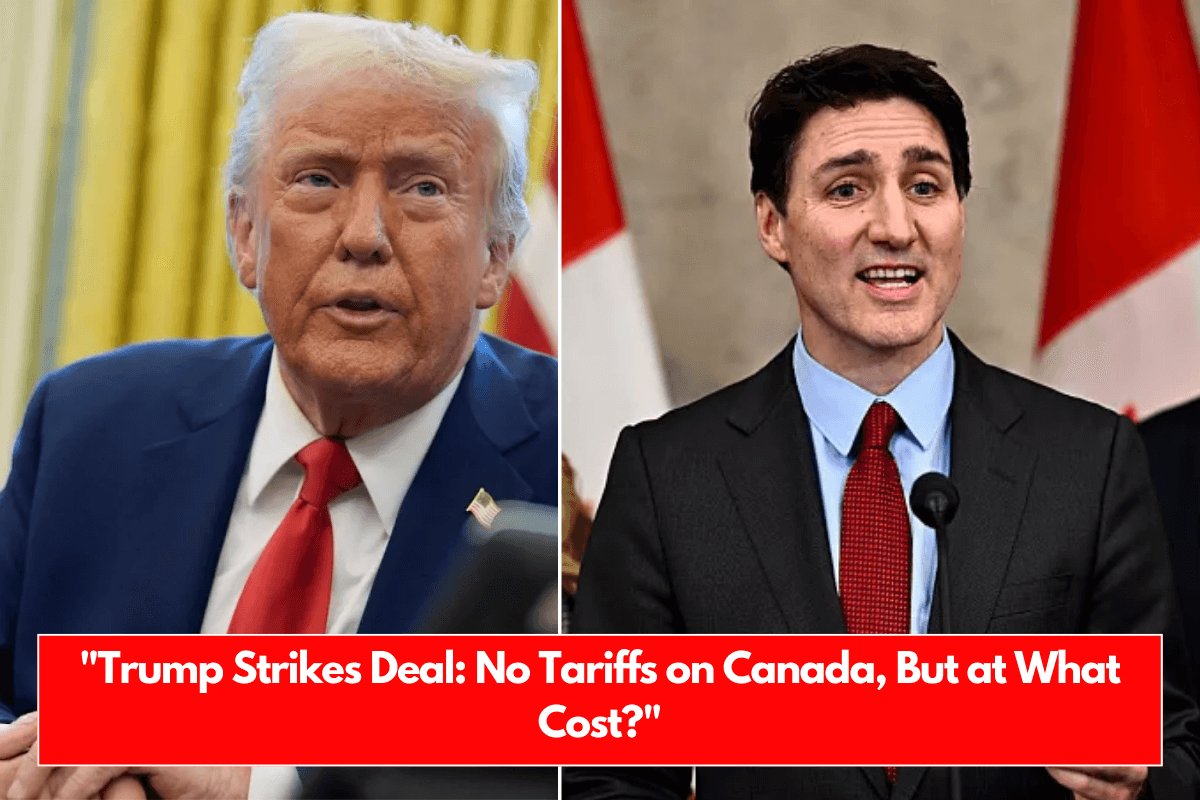President Donald Trump has decided to temporarily halt additional tariffs on Canadian imports for 30 days after a key phone conversation with Canadian Prime Minister Justin Trudeau. The decision comes as Canada agreed to several measures aimed at addressing U.S. concerns over border security and drug trafficking.
The 30-Day Tariff Pause: What Led to It?
On Monday, hours before the new 25% tariffs were set to take effect, Trump and Trudeau discussed solutions to prevent further economic tensions. Following the call, Trudeau announced a series of new plans to enhance border protection and reduce drug trafficking, which helped secure the tariff delay.
In a post on X, Trudeau revealed that Canada will implement a $1.3 billion border strategy, including the appointment of a “fentanyl czar” to address the issue of drug trafficking, particularly fentanyl.
Canada’s Border Security Enhancements
To reassure the U.S., Canada has pledged to:
- Deploy new helicopters, advanced technology, and additional personnel at the border.
- Strengthen cooperation with American authorities to improve coordination.
- Assign nearly 10,000 personnel for border security operations.
Trudeau emphasized that Canada will designate criminal cartels as terrorist organizations and ensure 24/7 surveillance at the border. A new Canada-U.S. Joint Strike Force will be created to target organized crime, fentanyl trafficking, and money laundering. Additionally, $200 million will be allocated to enforce these measures.
Trump’s Concerns and Tariff Threats
Donald Trump has repeatedly criticized Canada and Mexico for not doing enough to control the flow of illegal migrants and drugs, particularly fentanyl, into the United States. He claims that the U.S. has effectively subsidized Canada by $200 billion annually and sees tariffs as a necessary step to protect American interests.
In a statement released on Saturday, Trump explained the reasoning behind the tariffs, saying, “We need to protect Americans, and it is my duty as President to ensure the safety of all. I made a promise on my campaign to stop the flood of illegal aliens and drugs from pouring across our borders.”
Mexico Responds to Tariff Pressure
Mexico, facing similar tariff threats, has also taken action. Mexican President Claudia Sheinbaum announced the deployment of 10,000 troops along the U.S.-Mexico border in a bid to reduce illegal crossings and drug trafficking.
Broader Tariff Plans Targeting Canada, Mexico, and China
Trump had threatened to impose:
- A 25% tariff on all goods from Canada and Mexico.
- A 10% tariff on Canadian energy imports.
- A 10% tariff on goods entering the U.S. from China.
The tariffs on Canadian and Chinese goods were scheduled to take effect on Tuesday at midnight, but Trudeau’s concessions have postponed this deadline.
Reactions and Provincial Pushback
Some Canadian provinces have reacted strongly to Trump’s tariff threats. Leaders from several regions pledged to retaliate by removing American alcohol products from store shelves.
The 30-day pause gives both countries time to continue working on long-term solutions. With $1.3 billion in Canadian investments and cooperative efforts, the goal is to address border issues while avoiding further trade disruptions.
If successful, these measures could prevent the need for harsh tariffs and foster better U.S.-Canada relations. However, if progress stalls, the tariff threats could return.
